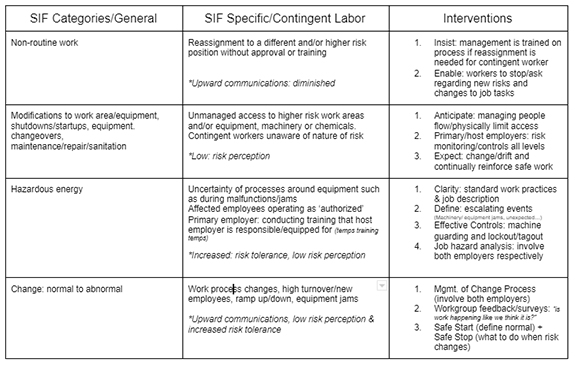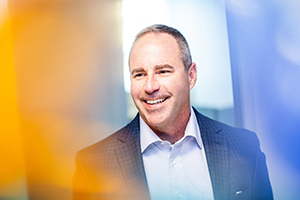Managing risks to acceptable levels in today’s contingent labor workforce.
By Scott DeBow, CSP, ARM
As the use of contingent labor continues to grow as a necessary part of employers’ labor strategy to meet the needs for an agile, flexible workforce, it’s critically important for both employers (primary: staffing/contract and host: client) to better understand what is required for safe work to occur.
While the number of workers has increased from 120 million to 160 million between 1992-2019 (NSC: 2021), work-related injury and illness rates have steadily declined. That is obviously a good thing, and can be attributed to the traditional focus and intensity on reducing OSHA-recordability rates as an indicator that safety is improving. But if we’re really improving in safety, shouldn’t we also be seeing a corresponding decrease in the number of serious injuries as well? Data from the Bureau of Labor Statistics’ National Census of Fatal Occupational Injuries reveals that 2019 showed the largest number of fatalities since 2007,which equates to one worker fatality every 99 minutes. Please don’t think about other employers’ workers as you read this. Think about your work force. Families. Humans. You.
Keeping this in mind, I believe it’s more accurate to say we’re improving in the consistent reduction of minor and moderate injuries, but it’s obvious we have important work to do in the realm of serious injury and fatality (SIF) prevention.
Part of the challenge with the traditional approach to safety has been based on the belief that managing risks leading to minor or moderate injuries will also reduce the risks associated with severe injuries, or those leading to fatality. What we now know is that the precursors leading to SIF exposures require different risk controls and practices that are much more connected to the management systems of the organization.
Fred Manuele, a board-certified safety professional, engineer and author, described these system connections to SIF events as “multiple and complex,” and having “organizational, technical, operational or cultural origins” in his book Advanced Safety Management: Focusing on Serious Injury Prevention. Adding another employer into the working environment, we multiply these complexities to that management system in areas like critical risk identification and communications leading to hazard abatement, and as such, should integrate this knowledge into our safety management systems.
What has been helpful to many employers is better understanding the specific categories of risk associated with serious risks and vulnerabilities so they can be better equipped to direct the needed resources for intervention. The chart below highlights these SIF categories from a general nature, as well as the unique risk-multipliers and needed interventions specific to a contingent labor workforce:

Notice that the chart above contains both physical and operational circumstances, as well as unique risks and vulnerabilities specific to the contingent labor workforce that are italicised. We need to understand these powerful, cultural implications. As important as it is to effectively manage the physical know-how in terms of safe operations, addressing the unique needs of the workforce that live in the realm of the complex and cultural described above are perhaps even more important. Let’s take a quick look at the significance of these vulnerabilities, which I also refer to as risk multipliers, that are specific to the contingent labor workforce:
1. Low Risk Perception
a. A contingent worker has a lower understanding of “How can I get hurt doing this task,” as compared to employees in a traditional working arrangement
2. Increased Risk Tolerance
a. Contingent workers are often in a position and willing to do more in order to
i. gain an opportunity (extended assignment or become a permanent employee)
ii. avoid a perceived negative, such as assume more risk than acceptable if requested by a supervisor rather than saying no
3. Diminished: Upward Communications
a. Likelihood of ‘raising my hand’ when confronted with a serious risk at a client location
Considering the above, it’s important for both employers to recognize the mutual interdependence and opportunity to manage these specific, unique risks in their shared environment. New understanding in safety and human performance has given us much better insight into what is required for work to go safely, and companies that are leading well in this area understand that if it takes two or more employers to accomplish work, then it takes those same employers working as a team to continually assess, monitor and manage these unique risks and vulnerabilities for the benefit of the entire workforce.
Grateful to be on this journey together toward a better future!

About the Author:
Scott currently serves as the Practice Leader for Risk/Safety at Randstad, a wholly-owned subsidiary of Randstad Holding N.V., a $23.3 billion global provider of HR services and the global leader in the HR Services Industry. In addition to workforce solutions in areas of engineering, IT, legal, life sciences, healthcare and manufacturing/logistics, Randstad operates with the belief that how we operate as a company should move society forward. With an inside-out perspective as a safety professional in non-traditional employment settings, Scott sees tremendous opportunity for systems improvements that can work together to reliably create and maintain safer work environments.
In this episode, I sat down with Beejan Giga, Director | Partner and Caleb Emerson, Senior Results Manager at Carpedia International. We discussed the insights behind their recent Industry Today article, “Thinking Three Moves Ahead” and together we explored how manufacturers can plan more strategically, align with their suppliers, and build the operational discipline needed to support intentional, sustainable growth. It was a conversation packed with practical perspectives on navigating a fast-changing industry landscape.